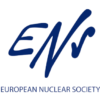Nuclear energy will power Google, Amazon, and Microsoft’s server farms! How? And what’s the story behind it?
Important developments in nuclear energy – big international tech companies are turning to small modular reactors, investing in SMR technology
The last few weeks have been extremely busy for international nuclear news. One after another, big technology companies such as Microsoft, Amazon and Google have announced nuclear power projects. What could be behind this trend? And what has the Google – Kairos Power consortium been up to?
Baseload power 7 days a week, 24 hours a day
First of all, it should be made clear that the long-debated – rather theoretical – question of whether there is still a product called “baseload power” in the electricity market and whether there is a need for base-load power plants has been clearly settled. Obviously, the big international technology companies in the IT sector see that it is not possible to keep their server farms running without a continuous and stable supply of electricity. The idea that these server farms will be powered by solar and wind energy for 0-24 hours, winter and summer, is clearly a marketing concept in an energy policy debate that sounds good but has strong technological limitations. It is not something on which an IT services and trading company can base a continuous and sustainable business while having to use carbon-neutral resources. This is one of the reasons why these technology companies have embarked on nuclear power plant developments or committed to financing such projects.
And there is another aspect that unfortunately shows Europe’s competitive disadvantage. Namely, these large technology companies are essentially American-based, operating in the United States of America, and have accumulated such large financial resources as a result of their business operations that it is possible for them to invest in nuclear power projects without any further hesitation. These technology companies now have venture capital funds that not only invest in IT and telecoms projects but also enable them to invest hundreds of millions USD in new technologies.
Small Modular Reactors
New developments are clearly needed in the nuclear energy sector. While in the past, electricity market developments have driven the industry towards the development of ever larger nuclear units, this process has also meant that large and complex power plants take longer to build, making them increasingly expensive to finance (rising cost of interest on capital).
The development of so-called Small Modular Reactor (SMR) technologies aims to compete with this trend. SMRs mean nuclear power plants with an electrical capacity of up to 300 MW. The concept is that by reducing the unit size of a nuclear power plant, manufacturing the components and modules in a specially built plant under optimal production conditions, and then assembling these modules on-site to build a complete nuclear power plant, the typical construction time for a nuclear power plant of 8-15 years (or 17 years in some cases, i.e. Olkiluoto-3) could be reduced to three to four or five years.
This significant reduction in construction time can lead to a radical reduction in the cost of capital. Thus, even if the specific investment cost of a small modular reactor (i.e. the investment cost per 1 kW) is higher than the specific investment cost of a large nuclear power plant unit, this cost disadvantage can be massively compensated by shorter construction times and lower cost of capital. So it makes absolute sense to pursue the development of such small modular reactors.
And there is also a very important technological aspect. At the dawn of nuclear power, in the 50s and 60s, there were a lot of different exotic reactor concepts being designed in the big nuclear research centres around the world. In fact, experimental reactors were built, which at that time were used to gain operational experience. All this experience in design, construction and operation, together with the research and development that has been carried out since then, is now available for use. If there is an investor and a favourable financing environment, these studies and concepts can be pulled off the shelf. Using the latest technologies in computer simulations and digital design these reactor concepts can be significantly improved. Favourable research and development funding environment in the US led to a situation when venture capital funds from these big tech companies are willing to invest in the development of new nuclear technologies.
Just to give a few examples, TerraPower, a company founded by Bill Gates, is developing a liquid sodium-cooled SMR reactor. Sam Altman, the CEO of OpenAI (which company is developing ChatGPT) is co-owner and chairman of the board of OKLO, a publicly traded company, which is developing a small, fast neutron spectrum reactor (designed plant size in the 15-50 MWe power range), which will be cooled by heat pipes. The European equivalent of such developments, and the involvement of venture capital in nuclear developments in the European Union in this order of magnitude, is awaited for the time being.
The Google, the Kairos Power and the molten salt reactors
Let’s take a closer look at what Google undertook when it allied with Kairos Power to develop and commercialise a new small modular reactor based on molten salt reactor technology. According to a statement from the companies, the two companies have signed a general power plant development agreement under which Kairos Power will develop an advanced nuclear power plant, build and operate multiple units of this type of reactor, sell the power generated and provide ancillary services to Google. A key element of this will be that Kairos Power’s nuclear power plant will generate electricity in a carbon-neutral way so that it will supply electricity to Google under Power Purchase Agreements (PPAs) and will certify that the electricity sold is from a carbon-neutral source. The power plants will be built in “relevant service territories to supply clean electricity to Google data centres”, with the first installation to be completed by 2030, to support Google’s 24/7 carbon-free energy goals.
The SMR developed by Kairos Power is a molten salt reactor concept, which the developers call KP-FHR. The acronym stands for Kairos Power Fluoride Salt High Temperature Reactor. This type is exotic in many ways. I would say that it is hard to find any feature of the Kairos reactor that would even closely resemble the light water cooled, light water moderated pressurized water (PWR) large nuclear power reactors in use today, except of course for the nuclear chain reaction that is the basis of the power generation. Let us take a few key features and compare PWRs with the KP-FHR concept along these lines.
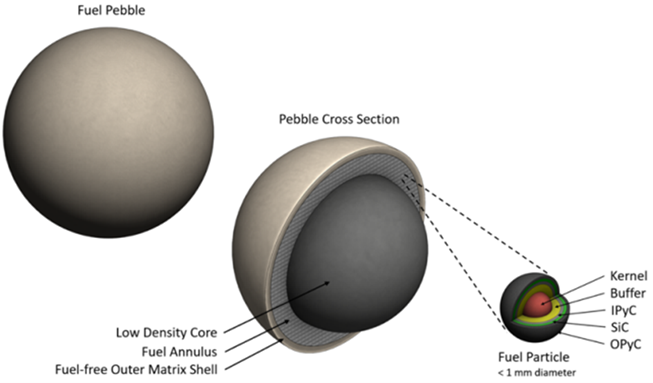
Fig. 1.: The fuel pebbles of KP-FHR using TRISO fuel [1]
Fuel
Whereas PWRs use uranium-dioxide fuel in cylindrical fuel pellets put into metallic fuel pin cladding with up to 5% uranium enrichment, KP-FHR fuel is contained in tiny (about 1 mm) spherical ceramic-coated uranium-dioxide particles (uranium-dioxide kernel coated with ceramic layers); the initial uranium enrichment used is 19.75%, about four times higher than the enrichment of current reactor’s fuels.
Moderator
PWRs use light water to slow down the neutrons in the chain reaction, while KP-FHR uses a graphite moderator in the so-called TRISO fuel. Graphite is found in the spherical fuel particles described above. These fuel particles are enclosed in the outer shell of larger, 4 cm diameter graphite spheres, called pebbles, so this graphite is also considered a moderator (the fuel pebbles and their structures are shown in Fig.1).
Cooling and energy conversion
The PWR reactors are cooled by water at high pressure (around 150 bar) which allows coolant temperature in the reactor core to around 300 °C without boiling. This high-pressure high-temperature water is pumped to heat exchangers called steam generators, where the heat is used to boil the secondary side water, which has a lower pressure, around 70 bar. The produced steam is used to drive a steam turbine. In the KP-FHR, a molten FLiBe (fluor-lithium-beryllium) salt flows between the TRISO fuel pebbles. This molten salt can be heated well over 500 °C even at pressures close to atmospheric (1-2 bar). According to nominal data, the molten salt coolant enters the reactor at 550 °C, at the reactor outlet its temperature is 650 °C.
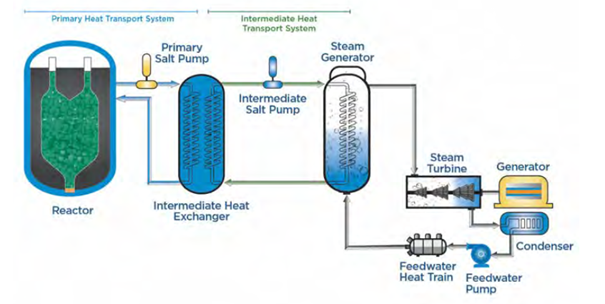
Fig. 2.: The basic scheme of KP-FHR [1]
Refuelling
In PWR-type nuclear power plants, refuelling is possible only when the reactor is shut down, cooled down and depressurised. The KP-FHR has the capability to change fuel during operation, thus enabling a smaller fissile material inventory and so a smaller reactivity reserve at reactor start-up, which is a significant safety advantage. It is important to note that among the molten salt reactor concepts, there are others where the fuel would be dissolved in the molten salt coolant, which would allow different isotopes to be added to or removed from the coolant-fuel mixture during operation. The KP-FHR is not like this, as the fuel is not dissolved in the molten salt coolant, but the fuel balls float in the coolant, moving around inside the reactor so that removing and adding fuel pebbles during operation is possible.
The size and design of the reactor vessel are illustrated in Fig. 3. It is worth mentioning that in a KP-FHR unit with 140 MW nominal electrical power the reactor core contains only about 100 kg enriched uranium in the form of TRISO fuel pebbles, while a 1200 MW PWR reactor contains more than 200 000 kg (200 tonnes) of fuel. In contrast, the KP-FHR requires in-service refuelling, while a PWR plant can be operated for 12-18 months without refuelling.
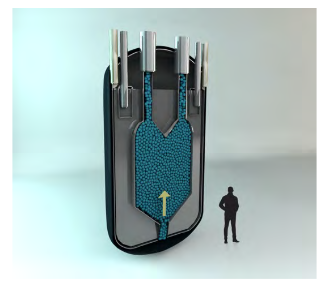
Fig. 3.: The reactor vessel of KP-FHR [1]
The system of engineering barriers
To prevent the release of radioactivity into the environment, we use engineering barriers, i.e. walls or protective layers between the radioactive materials and the environment. In PWR reactors, four engineering barriers are used:
- Fuel pellets are made of uranium-dioxide, whose ceramic structure retains ~99% of the fission products within the pellets.
- These cylindrical pellets are enclosed in long, cylindrical metallic rods made of a zirconium alloy, which hermetically seal the fuel pellets from the cooling water.
- The fuel rods are located in the high-pressure reactor vessel, this thick wall metal tank and its connected high-pressure cooling system is the third engineering barrier.
- The entire nuclear steam supply system is housed in a reinforced concrete building designed for 3-5 bar overpressure, which can localize the high-pressure steam that would be released if the 3rd engineering barrier were compromised.
KP-FHR’s safety philosophy and engineering barrier system are completely different:
- In TRISO fuel, the kernel of a given fuel particle is a 19.75% enriched uranium-dioxide grain surrounded by layers of carbon and silicon carbide. This layered structure provides very robust protection against fission product release. The first engineering barrier is the uranium-dioxide kernel, which is located in the centre of a given fuel particle, and the second engineering barrier is the silicon-carbide layer around the kernel.
- The third engineering barrier is the pyrolytic carbon (a special carbon matrix produced at high temperature) layer around the silicon carbide layer and the graphite matrix of the fuel pebbles.
- The FLiBe salt melt used in the primary circuit has itself a significant fission product retention capacity, which is by the design also considered as an engineering barrier.
Safety philosophy
In PWR reactors, the four elements of engineering barrier systems described above, the defence in-depth principle, and the safety systems form the basis of the safety philosophy. The safety systems are designed to maintain the integrity and functionality of the engineering barriers during design basis accidents and design extension conditions.
It is important to understand that the safety philosophy of the KP-FHR reactor is very different. The TRISO fuel – which is not a new invention, having been under research and development for special reactors since the 1960s – remains intact even at extreme temperatures, with the grains and pebbles retaining their integrity and function up to 1600°C. The boiling point of the FLiBe primary circuit molten salt at atmospheric pressure is 1430 °C, which also provides a large margin for cooling not only during normal operation but also under accidental conditions.
In the primary circuit of the molten salt reactor, the pressure is low, so the KP-FHR does not need a reactor vessel and piping system designed for high pressure. If a pipe break should occur in the primary circuit, the leaked coolant does not need to be replaced immediately because the TRISO fuel protects itself from melting, and its passive cooling is sufficient. As a consequence, based on the available specifications, no leak-tight, overpressure-withstanding containment building around the reactor is needed for the KP-FHR, the function of the reactor building is to protect the reactor from external influences. All this promises a much cheaper system and a much faster construction time.
Too good to be true?
Certainly, the obvious question is that if this technology can answer so many questions, and it was being investigated back in the 1960s, why are there no such reactors in operation today? The answer is complex but easy to summarise: there are drawbacks for which there has been no real, economical answer so far, but obviously advances in technology can address these in time. Some of the challenges are listed here:
- High-temperature molten salts are typically very corrosive materials, and finding structural materials compatible with them is not easy. The reactor vessel and the primary circuit piping system are exposed to FLiBe salt, while the secondary circuit equipment is exposed to nitrate salt melts. Finding a compatible material is not easy. But even good material degrades in such an environment. In the case of KP-FHR, the design life of the reactor vessel is therefore only 20 years, while the plant is designed for 80 years of operation. This means that every 20 years the reactor vessel has to be replaced. This in itself will be a major technical challenge. The same could be the case with the heat exchangers. It is worth noting that exactly these challenges have led Kairos Power to set up a molten salt test facility to analyse the behaviour of the melt and its interaction with structural materials.
- In the primary FLiBe salt, lithium is present, which is activated under neutron irradiation and then radioactively decays producing tritium. The management of tritium is a challenge in terms of environmental radiation exposure. In addition, beryllium is toxic, which also makes it more difficult to work with the molten salt present in the primary circuit.
- Managing the chemistry of such a facility is much more challenging than the chemistry of a water-cooled reactor. Experience with this more complex task is still limited. Clearly, experience can be accumulated, but it takes time and money.
- There is little operational experience, which is essential for running a commercial facility. Again, operational experience can be gained, but it is also a matter of time and money.
- Nuclear waste management here entails different types of challenges than in PWRs. There is currently no technology to reprocess TRISO fuel, so what exactly to do with the spent fuel from such a reactor will have to be addressed. In a country such as the USA, where there are no plans to reprocess spent nuclear fuel, this is not a problem after all, because the same can happen to spent TRISO fuel as to spent PWR fuel: after temporary storage, it can be disposed of in a final deep geological disposal site. Because of the high enrichment of nearly 20%, the specific spent fuel production of such a reactor (mass of spent fuel per unit of electricity produced) will be much lower than that of a PWR reactor, whereas the PWR fuel can be reprocessed and its existing technology is available in several countries.
- Licensing issues are also numerous, as the nuclear safety authorities have not accumulated experience in the nuclear safety licensing of molten salt reactors. This can obviously be accumulated, but it also takes time and money. By the way, construction of the small-scale prototype of Kairos, which does not yet generate electricity, started this summer.
Despite – or because of – the challenges, we are excited to see when and what these reactors will actually look like, as a result of Google’s collaboration with Kairos Power. For now, there are a number of tests underway, which is very encouraging. What is certain is that developed economies, and tech companies in them, need 7/24 continuous base-load power, and technological diversification in nuclear power also offers many advantages, even if there are challenges which have to be dealt with.
References:
[1] IAEA SMR Book, 2020 (Advances in Small Modular Reactor Technology Developments, A Supplement to: IAEA Advanced Reactors Information System (ARIS), 2020 Edition)
[2] World Nuclear News
[3] Kairos Power (https://kairospower.com/)
Prof. Dr. Attila Aszódi
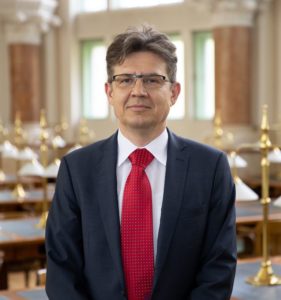
Full professor at the Institute of Nuclear Techniques of Budapest University of Technology and Economics. Currently, he is the dean of the Faculty of Natural Sciences at the Budapest University of Technology and Economics (Hungary). He took part in several projects of the International Atomic Energy Agency and the European Commission. He has more than 300 published scientific articles. His research interest is reactor safety, thermal hydraulics of nuclear reactors, Computational Fluid Dynamics, Particle Image Velocimetry, nuclear power plants, energy policy and sustainability.
